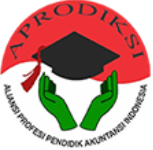Improving Learning Activities by Implementing Scientific Approach through Discovery Learning Model
(1) SMP 2 Kudus, Indonesia
Abstract
This research aims to describe planning, implementation, observation and reflection. It evaluates and identifies the constraints and solutions at each cycle and to find out the learning outcomes achieved with scientific approach through the discovery learning model for 2nd grade students at Yunior High School 2 Kudus. It was a descriptive qualitative study. Findings show that the students’ activity is good enough on the first cycle and good on the second cycle. The average mean score of written test is on the first cycles B- and A- on the second cycle. If it is seen from minimum completeness criterion (KKM), there are 19 students with the percentage of acquisition by 55% on the 1st cycle and there are 32 students with the percentage of acquisition by 93% on the 2nd cycle. The observation results show that scientific approach give improvement of students’ activities on the first cycle and the second cycle. The results obtained from the use of scientific approach through the discovery learning model to improve the activity is good, but it needs to be observed continuously on students’ attitudes, skills and knowledge in school life.
Keywords
Full Text:
PDFReferences
Aprilia, L., & Mulyaningsih, S. (2014). Penerapan Perangkat Pembelajaran Materi Kalor Melalui Pendekatan Saintifik Dengan Model Pembelajaran Guided Discovery Kelas X SMA. Skripsi. Surabaya: Universitas Negeri Surabaya.
Corbett, A. C. (2007). Learning asymmetries and the discovery of entrepreneurial opportunities. Journal of Business Venturing, 22(1), 97-118.
Dean Jr, D., & Kuhn, D. (2007). Direct instruction vs. discovery: The long view. Science Education, 91(3), 384-397.
Departemen Pendidikan Nasional. (2002). Manajemen Peningkatan Mutu Berbasis Sekolah : Buku 5 Pembelajaran dan Pengajaran Implementaitve. Jakarta: Depdiknas
Djamarah, S. B. (2011). Psikologi Belajar. Jakarta: Rineka Cipta
Hai-Jew, S. (2012). Scaffolding discovery learning spaces. In Encyclopedia of the Sciences of Learning (pp. 2916-2922). Springer US
Ilmi, A. N. A., Indrowati, M., & Probosari, R. M. (2012). Pengaruh Penerapan Metode Pembelajaran Guided Discovery Terhadap Keterampilan Proses Sains Siswa Kelas X SMA Negeri 1 Teras Boyolali Tahun Pelajaran 2011/2012. Pendidikan Biologi, 4(2).
Kemendikbud RI. (2014). Buku Guru IPS kurikulum 2013. Jakarta: Kemendikbud RI
Kusmaryono, H. (2015). Efektifitas Pembelajaran Diskoveri-Inkuiri Berbantuan CD Interaktif Terhadap Hasil Belajar Materi Kurs Tukar Valuta Asing Dan Neraca Pembayaran di Sma Negeri 1 Bae Kudus. Dinamika Pendidikan, 10(1), 16-27.
Kusumawati, D. (2014). Peningkatan Pemahaman Konsep Pada Pokok Bahasan Menghitung Pajak Dengan Model Pembelajaran Discovery Learning (Studi Pada Siswa Kelas Viii-C SMP N 1 Jaken Pati Tahun Ajaran 2013/2014). Economic Education Analysis Journal, 3(2).
Moleong. L. (1994). Metodologi Penelitian Kualitatif. Bandung: Remaja Rosdakarya.
Nur, M. (2001). Pengajaran dan pernbelajaran Implementative. Makalah pada Pelalihan TOT Guru Mata Pelajaran di Surabaya.
Oemar, H. (2008). Media Pendidikan. Bandung: Aditiya Bakti
Prihandika, D. R. (2014). Meningkatkan Ketrampilan Membuat dan Membaca Kurve Keseimbangan Serta Hasil Belajar Siswa Menggunakan Metode Discovery dengan Menggunakan Media Visual Pada Siswa Kelas VIII C Smp Muhammadiyah 1 Kudus. Economic Education Analysis Journal, 3(3).
Purwanto, Nughoro, & Wiyanto. (2012). Penerapan Model Pembelajaran Guided Discovery Pada Materi Pemantulan Cahaya untuk Meningkatkan Berpikir Kritis. Unnes Physics Education Journal, 1(1).
Saab, N., Van Joolingen, W. R., & van Hout-Wolters, B. H. (2007). Supporting communication in a collaborative discovery learning environment: The effect of instruction. Instructional Science, 35(1), 73-98.
Sani, N. (2008). Artikel Kependidikan. Yogyakarta: Lintas Media.
Sardiman, A. S. (2002). Media Pendidikan: pengertian, pengembangan dan pemanfaatannya. Jakarta: Rajawali Pers.
Sayyid, H. (2002). Keunggulan Metode Mengajar Variatif.Surabaya: CV. Tunas Mandiri.
Sudjana, N. (2009). Penilaian Hasil Proses Belajar Mengajar. Bandung: Remaja Rosada Karya.
Sugiyono. (2006). Metode Penelitian Pendidikan Pendekatan Kuantitatif, Kualitatif dan R&D. Bandung: Alfabeta.
Sugiyono. (2012). Memahami penelitian Kualitatif. Bandung: Alfabeta,
Sulistyowati, N., Widodo, A. T. & Sumarni, W. (2012). Efektivitas Model Pembelajaran Guided Discovery Learning Terhadap Kemampuan Pemecahan Masalah Kimia. Chemistry In Education, 1(2).
Rohim, F., & Susanto, H. (2012). Penerapan Model Discovery Terbimbing Pada Pembelajaran Fisika Untuk Meningkatkan Kemampuan Berpikir Kreatif. Unnes Physics Education Journal, 1(1).
Van Joolingen, W. R., de Jong, T., Lazonder, A. W., Savelsbergh, E. R., & Manlove, S. (2005). Co-Lab: research and development of an online learning environment for collaborative scientific discovery learning. Computers in human behavior, 21(4), 671-688.
Yulianto, A. (2007). Peningkatan Kualitas Proses Dan Hasil Belajar Mata Kuliah Teori Akuntansi Melalui Pendekatan Discovey Learning. Dinamika Pendidikan Unnes, 2(1).
Refbacks
- There are currently no refbacks.

This work is licensed under a Creative Commons Attribution 4.0 International License.

.png)

.png)





